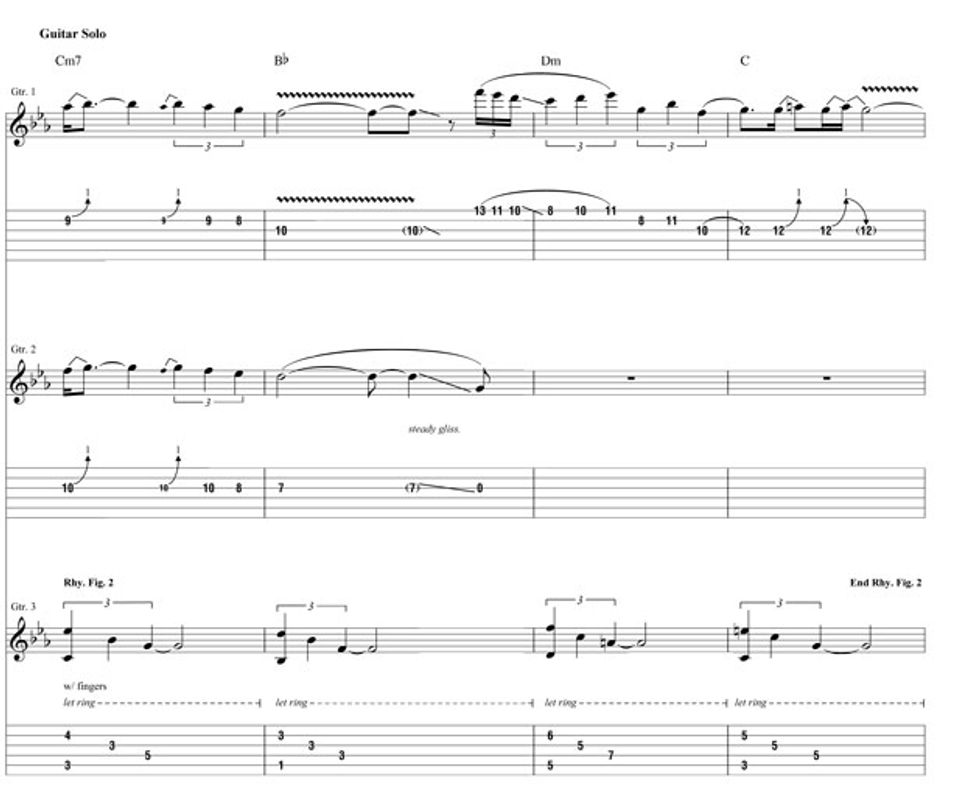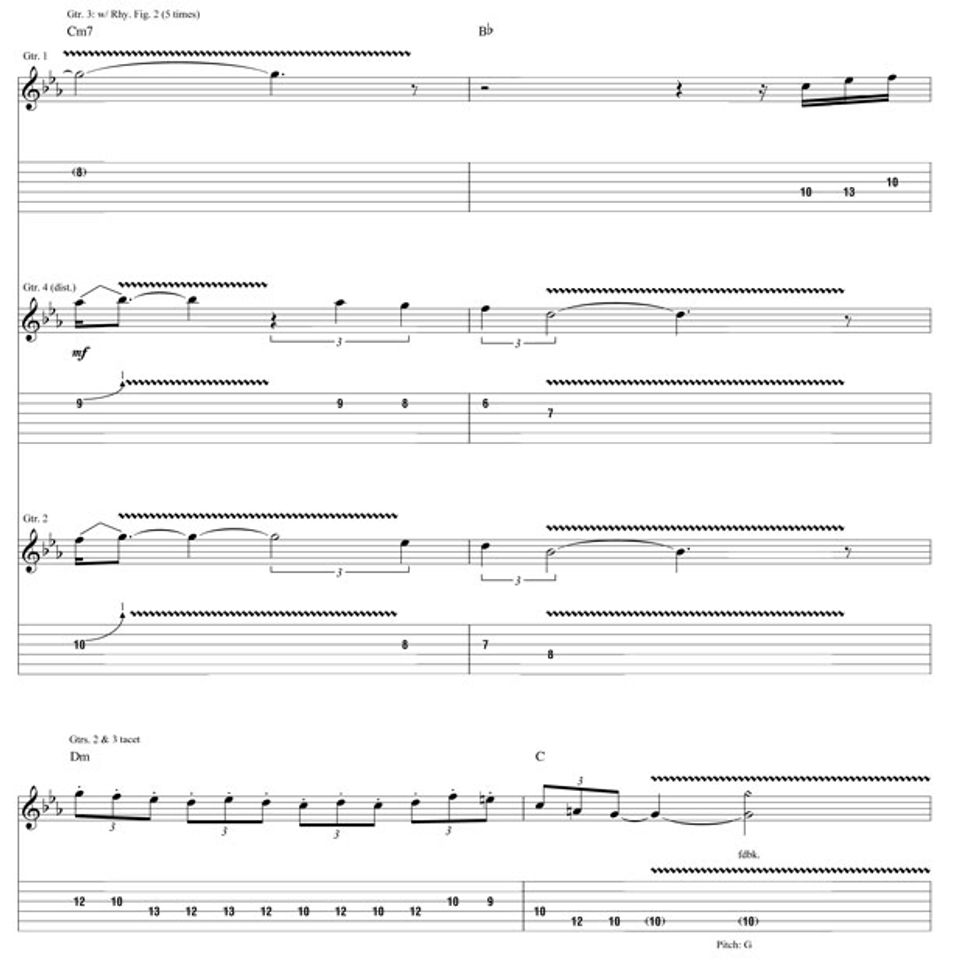Learn how to play five riffs from the progressive rockers’ latest album, Similar Skin.
“Little Gift” Intro
With Similar Skin, we wanted to get back to this bigger rock sound that was a little less intricate and progressive. I wanted to come up with a few riffs that seem to just knock you over with simplicity—like AC/DC with cross rhythms. Growing up, some of my favorite shows were when bands took a “less is more” approach in bigger rooms. This riff harkens back to those feelings I had watching bands like Foreigner or Thin Lizzy—bands with big monstrous riffs. Plus, I wanted to get away from that crazy articulation that always seems to run through our music. “Little Gifts” was our shot at getting back to that arena-rock feel. It’s got some cool syncopation with the upstrokes, though for the most part, it’s a big simple riff that everyone plays together. I’d written this a couple of years ago, so it was intended for what became Similar Skin. Instead of writing across the board and having too many songs to plow through, we wanted to focus on what sound we’re going for. “Little Gift” was one of the first ones.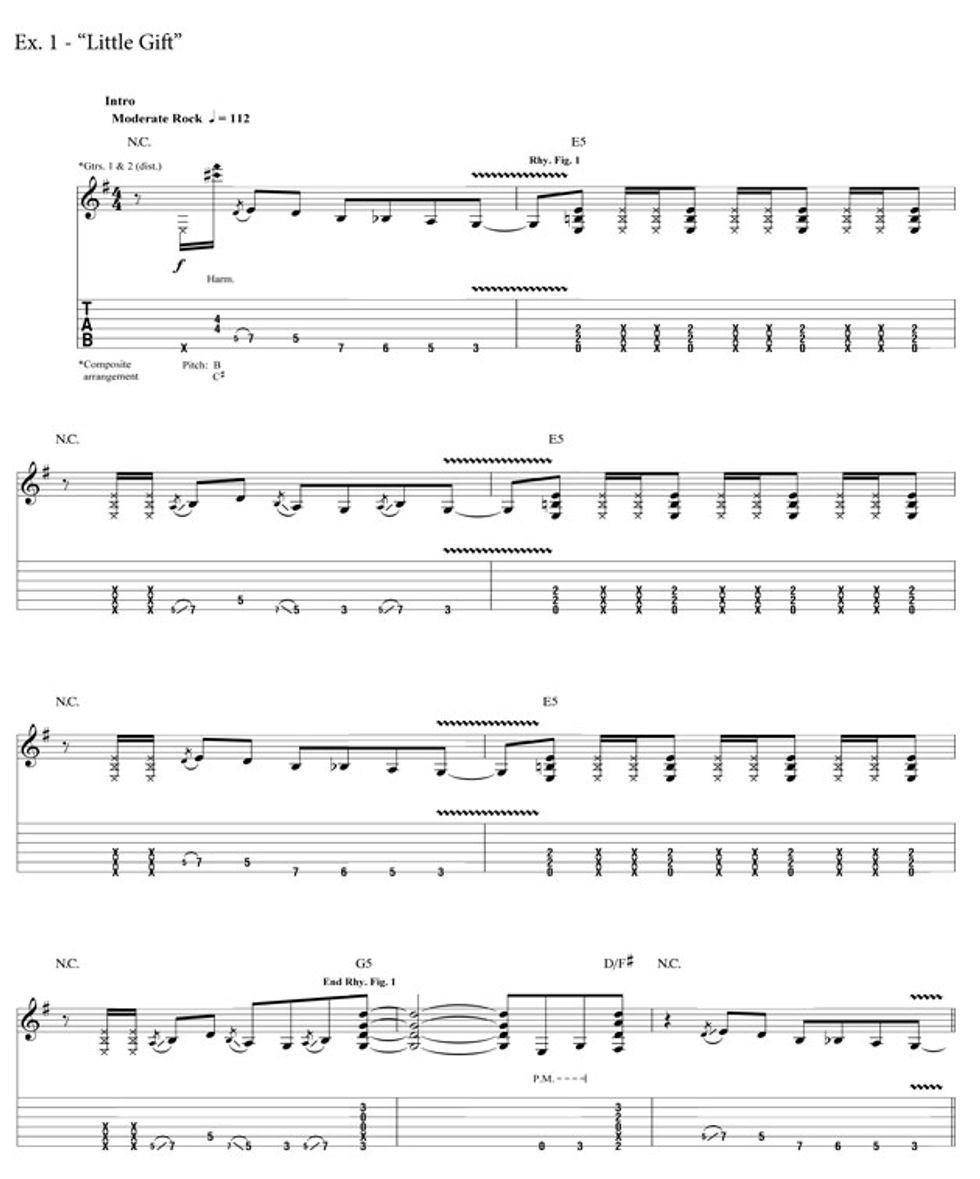
“Bridgeless” Interlude
This song has been in our book for about seven years. We recorded it because I think it tied into the heavier approach of the record. Umphrey’s is definitely a progressive rock-flavored band, and if we didn’t have any of that on the record people might be scratching their head a bit. Also, it’s great to end the record with this bombastic, riff-heavy tune with all these little intricate parts. The interlude here is kind of like a Steve Howe thing—lots of open strings and quick position shifts. When everyone played the riff together, it was like “Whoa, we got something here.” It illustrates the beauty of being different players and the way Brendan interprets a riff. If I wrote the riff, he has to interpret it and come up with something that sits nicely inside of it. It’s the stylistic differences that really humanize everything—it’s not so cold and calculated with exactly perfect harmonies. There’s a little bit of space to move inside that melody. For some bands, that doesn’t work, but that’s one of our go-to magic tricks. “Bridgeless” is definitely one of the tougher tunes in our book.
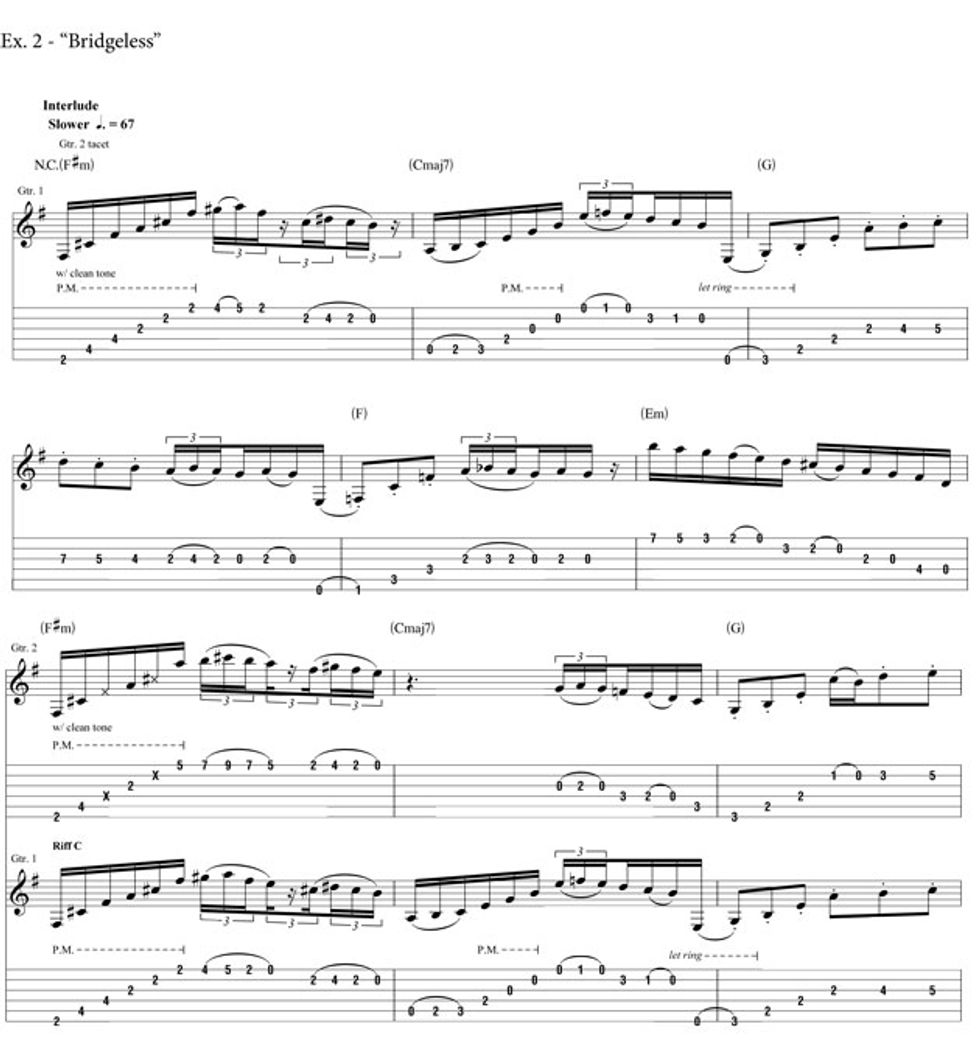
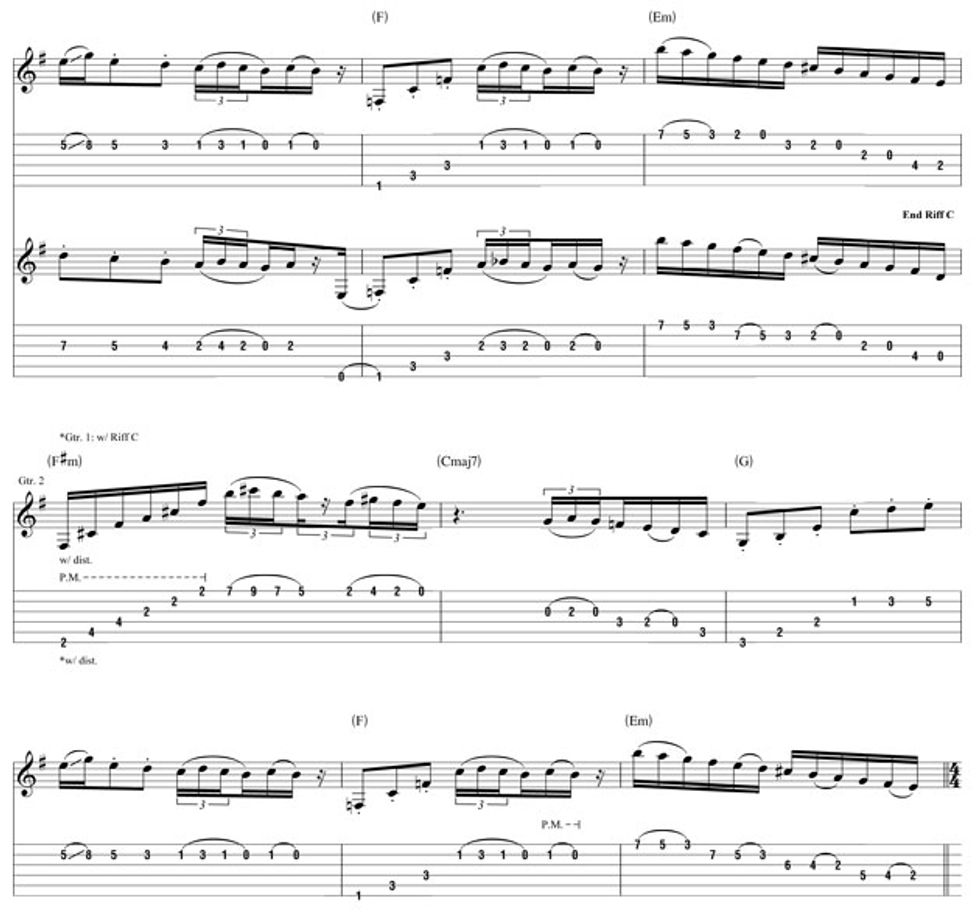
“Educated Guess” Interlude and Bridge
“Educated Guess” is on the progressive side of the new record, but to retain that heaviness, the interlude riff shows up and grabs you by the throat. I think of it as simplified Meshuggah—all downstrokes. The mixture of major and minor is a direct influence of Yes. I’ve always associated that Rick Wakeman pedal-chord sound happening whimsically over something that’s jagged. I’m doing the acoustic guitar and the heavy chugs and Brendan is doing everything else. In a live setting, I’ll split it up a bit since there are so many layers. Since he’s doing a lot of the singing, I’ll find a way to still chug, but throw in those major 7 chords at the same time. I find a way to make it work, and often I’ll go back to the recordings to make sure the essential parts are covered.
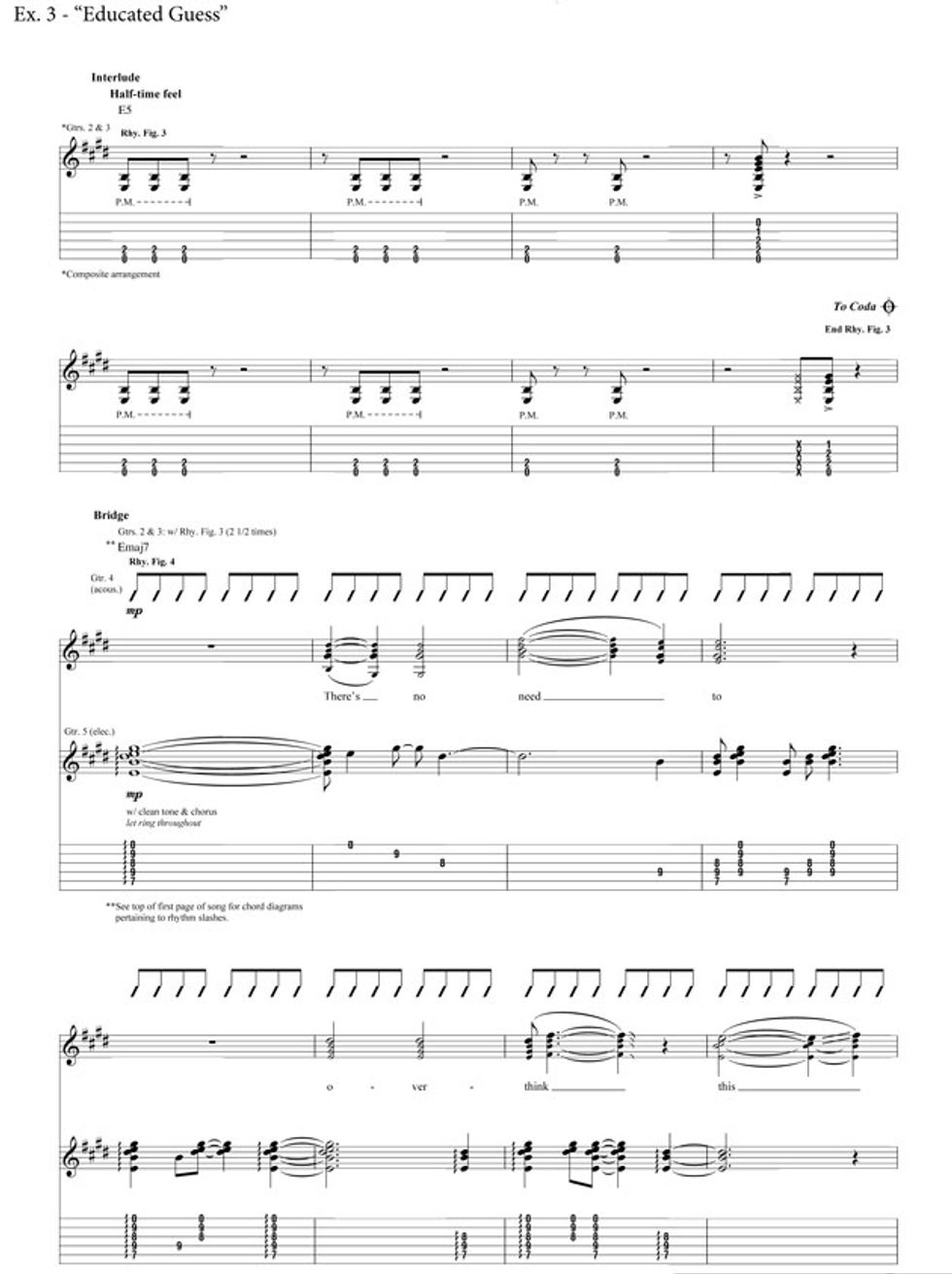
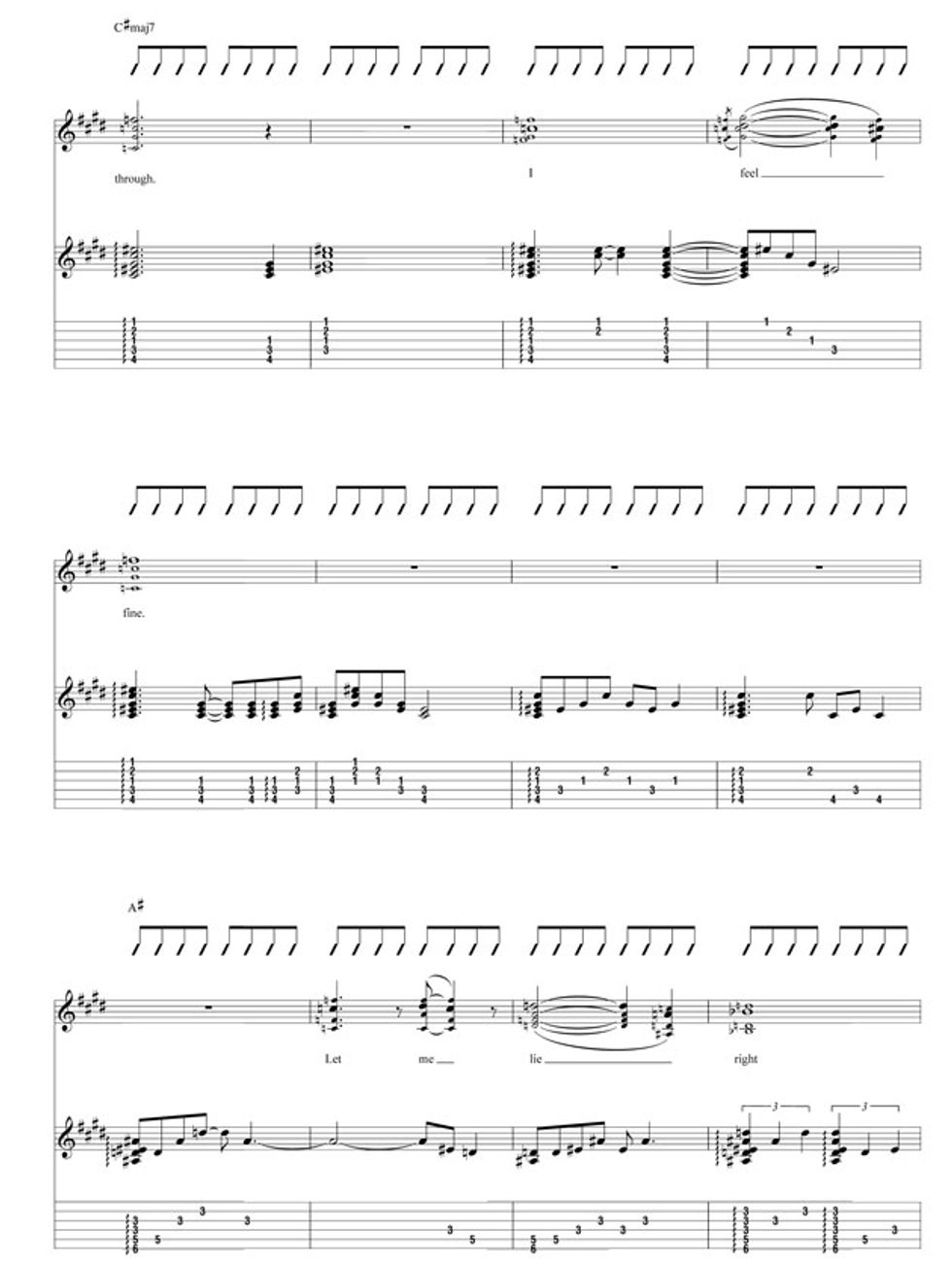
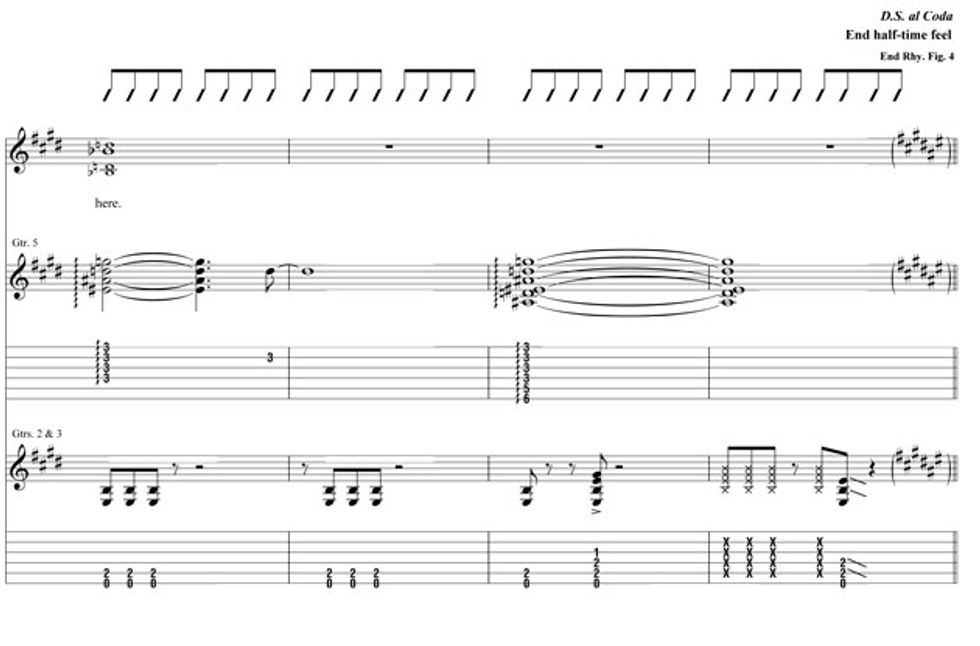
“Educated Guess” Intro
The intro has that Discipline-era King Crimson rhythm, like when Robert Fripp and Adrian Belew would mangle rhythms and eventually end up on the one. This comes directly from that era of King Crimson with that overly chorused sound that just wavers inside the note. You always have to use too much chorus on a riff like that. The squigglier it is, the more it pops. Like Andy Summers on “De Do Do Do, De Da Da Da.” It’s almost out of tune. I used a BBE Mind Bender on that.
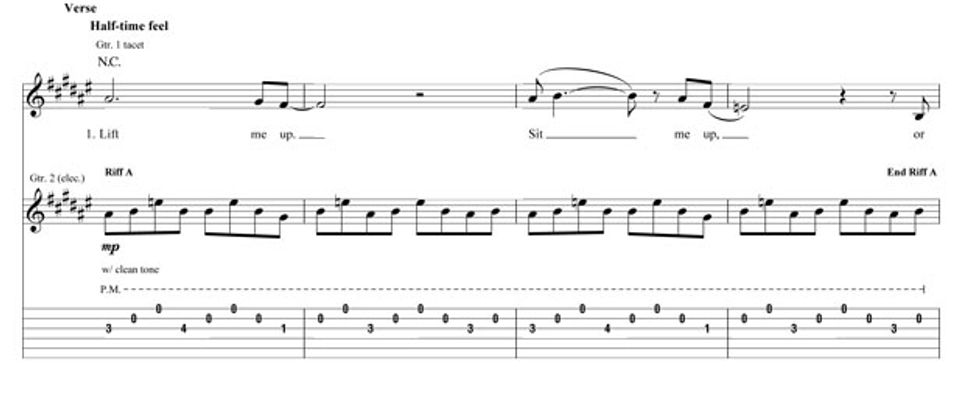
“Similar Skin” Guitar Solo
I recorded the guitar solo after everything was done and I thought the tune needed an actual melody rather than a traditional solo. I wanted it to be something that you would play every time. It sort of kicks the song out in a nice, majestic way. I hear a little Brian May in there, or even some of David Gilmour’s slow, spacious phrasing. It’s not about burning at this point. It’s very rare for us. Usually when it’s time to take a solo break, it’s like face to the wind. But, it’s cool to have something that’s a little more worked out. When Gilmour would go into “Comfortably Numb,” he has to play a certain amount of that solo verbatim.
